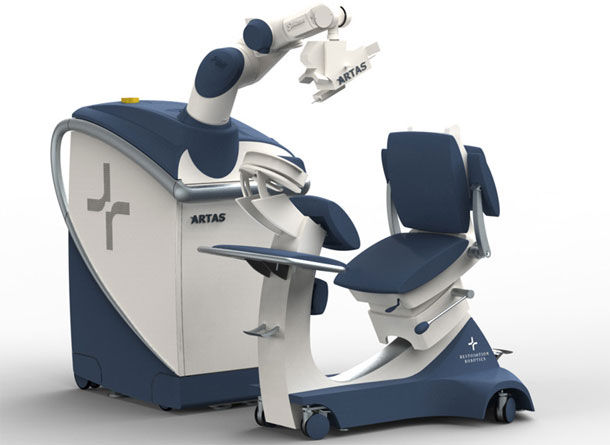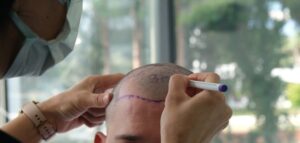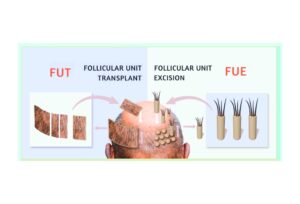ARTAS Hair Transplant Robot vs. THTS’s FUE Technique
Restoration Robotics, a company founded by Dr Frederick H. Moll, developed the ARTAS System. This completely automated machine is the first robot designed to carry out the scoring aspect of the FUE hair transplant procedure.

HOW ARTAS WORKS: THE MECHANICS
Cameras, colour identification sensors, and 3-D imaging software guide the robotic arm of ARTAS in selecting which follicles to score. To carry out the rest of the FUE process, ARTAS employs a needle punch mechanism, disposable dermal punches, disposable cartridges, a video imaging system and a user interface.
The patient is positioned for the robot to punch out the grafts on a donor area of roughly 5 to 10 cm at a time. During this time, the patient must remain absolutely still, and the head is restrained by straps. After this, the surgeon removes each graft by hand with a pair of forceps. The patient is then repositioned for ARTAS to work on a new section of donor hair. This process continues until the extraction portion of the surgery is complete. The implantation of grafts to the bald area is done using a traditional transplant approach.
POTENTIAL PROS OF ARTAS
The thought of a machine extracting FUE grafts is an attractive one if the machine can replicate the touch of an expert human practitioner, and if it can boost the speed of the extraction process.
In the opinion of both our skilled and experienced surgeons, this robot may work for doctors who wish to provide FUE, but don’t have the experience to do it manually or with a power punch.
CONS OF ARTAS OVER THTS’s FUE TECHNIQUE
- Higher Transection Rate. The Artas Robot has a transection rate (destroyed grafts) of 8 to 10%. Both Dr Huber and Dr Jones’ transection rate is 3 to 5%. Artas charges the doctor for all the destroyed grafts as well as the viable grafts, so many doctors plant these destroyed grafts knowing they won’t grow. Dr Huber and Dr Jones know the difference and with medical integrity – only charge for and plant viable grafts.
- Slower Rate of Extraction. The robot currently extracts about 600 grafts per hour, whereas both our doctors – Dr Huber and Dr Jones can extract 1,500 to 2,000 grafts per hour, enabling them to do 3,000 and even 4,000-graft sessions in a single day.
- Larger Punch. The Artas system uses a punch with a diameter of 1.65 mm, and our doctors use punches from .7 to .9 mm. A smaller punch means faster healing of the donor area, and there is less likely to be damage to surrounding grafts.
- More Likelihood of Buried Grafts. The Artas robot uses a dull punch system, which has been shown to be more likely to bury some of the grafts and cause cyst formation.
- A Robot Cannot Select Grafts for an Individual Patient. Any automated device will still have limitations in discerning the best follicle for extraction. For example, it is important to select donor hairs with a specific hairline or eyebrow design in mind. It is difficult for a machine to do this, whereas Dr Huber or Dr Jones can pick and choose different size grafts depending on the patient’s needs.
- Limited Donor Site. The Artas System is limited to areas that the square device can fit on (i.e. a strip around the back of the head). Dr’s Huber and Jones are able to extract from all permanent areas, including the sideburns, the beard or any other area of the body they choose.
- The Need to Shave the Head. With the Artas System, the physician has to shave the patient’s head, where Dr Huber and Dr Jones can perform an FUE procedure with limited or in some cases no shaving.
- Limited Hair Characteristics. ARTAS is only approved for use on patients with straight hair that is dark brown or black in colour. Our team of Doctors can perform FUE on any hair colour or texture.
At this point, both Dr Huber and Dr Jones feel the only advantage of the Artas Robot over an experienced FUE surgeon is purely a marketing one. It is slower, has a higher transection rate, is more expensive and has fewer choice of areas from which the grafts can be extracted.
*Original blog post dated August 21, 2019 – updated June 9, 2020.

















